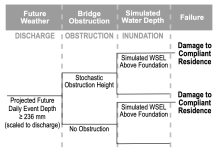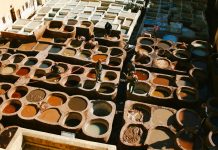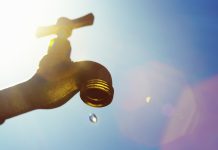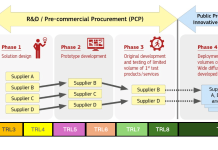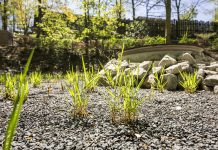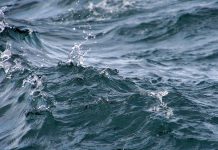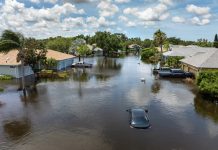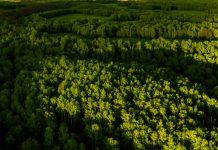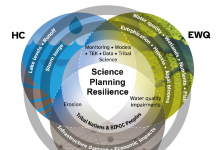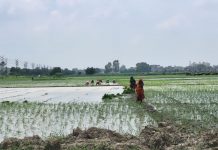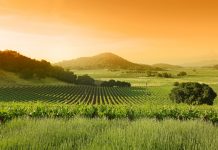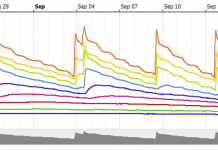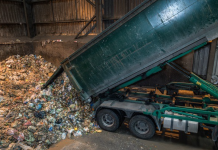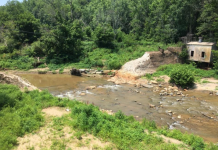Open Access Government produces compelling and informative news, publications, eBooks, and academic research articles for the public and private sector looking at health, diseases & conditions, workplace, research & innovation, digital transformation, government policy, environment, agriculture, energy, transport and more.
Home 2025
Archives
Probabilistic risk assessment (PRA) for sustainable water resources
Dynamic PRA provides sustainable flood risk decision support by identifying costs to present and future generations.
The challenges around the fastness of natural dyes for textiles
Victor Durand from Ever Dye sheds light on the challenges surrounding the fastness of natural textile dyes. Dive into his insights, and learn why this issue is crucial for the future of the textile industry.
Mounting water scarcity: A complex challenge requiring nuanced solutions
Addressing increasing water scarcity is a complex challenge that requires nuanced solutions, according to Peter Greve from the Climate Service Center Germany.
How innovation procurement can boost European water resilience
As Europe faces rising water crises, PCP WISE brings innovation procurement to the forefront to develop smarter, scalable tools for real-time water management and climate resilience.
LIFE4ZOO: Sustainable water circulation in zoos
LIFE4ZOO is a project dedicated to sustainable water circulation for the future of zoos, as explained by experts Tomáš Lederer, Petr Kvapil and Paola Sepúlveda-Ruiz.
Protecting the environment and human health from persistent, mobile, and toxic substances
PMT substances pose a worrying impact to human health and the environment. This article highlights why it’s crucial to recognize the need for integrated prevention and remediation strategies to effectively combat the challenges these pollutants present.
Nanobubble transformation of water treatment
Professor Niall English discusses the challenges and advancements in water treatment, highlighting AquaB Nanobubble Innovations’ breakthrough nanobubble-generation technology, which offers a more sustainable solution for water treatment across various sectors.
Purple phototrophic bacteria and microbial electrochemical technologies: A new biorefinery concept for wastewater treatment
The shift towards sustainable wastewater treatment focuses on nutrient recovery through biorefineries, highlighting the importance of microalgae, cyanobacteria, and, more recently, purple phototrophic bacteria for their metabolic flexibility and adaptability.
Climate and hydrologic change across the Great Lakes region and other transboundary waters
Scott Steinschneider, M. Altaf Arain, Paulin Coulibaly, Andrew Gronewold, and Gail Krantzberg, explore climate and hydrologic change across the Great Lakes region in North America and other transboundary waters.
Sustainable textile production: Policies and certifications transforming the global landscape
Victor Durand, the Head of Operations at Ever Dye, discusses how the company meets the new standards for sustainable textile production.
Climate change, water change and the critical role of community resilience
Dr. Amanda Shankland, Dr. Carolyn Johns, and Gail Krantzberg, explore climate change resilience, water change, and the critical role of climate-ready communities.
ML tools and systems models for WEFE nexus policy formulation and impact assessment
Experts from IHE Delft Institute for Water Education and Eurecat, Centre Tecnològic de Catalunya, guide us through the use of machine learning tools and systems models to inform WEFE nexus policy formulation and impact assessment.
Decarbonizing the textile industry: How Ever Dye is revolutionizing dyeing processes
While the textile industry is continuously evolving and becoming more technologically advanced, it still relies on highly polluting and energy-intensive processes. Victor Durand, Head of Operations at Ever Dye, shares the company’s commitment to changing this and decarbonizing the textile industry.
Machine learning for water-energy-food-ecosystems nexus policy
Dr Janez Sušnik, from the IHE Delft Institute for Water Education and NEXOGENESIS Coordinator, guides us through the use of machine learning for improving policy advice in the water-energy-food-ecosystems nexus.
Global centre for climate change impacts on transboundary waters
Dr. Gail Krantzberg and Dr. Andrew Gronewold, unpack the priorities of the Global Centre for Climate Change Impacts on Transboundary Waters.
Pavitra Ganga successfully demonstrates robust and low-energy wastewater technologies in India
Paul Campling is the coordinator and Anshuman is the scientific coordinator of the EU-India Horizon 2020 project Pavitra Ganga that ran from 2019 until the beginning of this year. This research and innovation project brought European and Indian partners together to collaborate on tackling wastewater treatment challenges and to unlock some of the resource recovery opportunities.
Ensuring the best performance of sensor-driven irrigation systems in vineyards
Professor Pete W. Jacoby, from Washington State University, explains how to ensure the best performance of sensor-driven irrigation systems in vineyards.
Improving vineyard irrigation efficiency with soil water sensors
Using soil water sensors to automatically schedule irrigation in winegrape vineyards offers the potential for growers to enhance water use productivity under warmer climate conditions.
Zero food waste city 2049: Identifying barriers to transition pathways
An Urban Living Lab in the UK have tested newly integrated systems approaches and valuation methods to understand how to reduce the city’s food waste.
Legacy pollution and our struggle to control non-point source pollution
To tackle legacy pollution and non-point source pollution, we must identify the sources, sinks and hot spots – but is it already too late?

